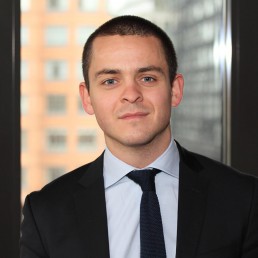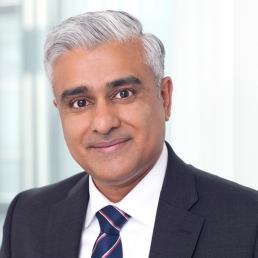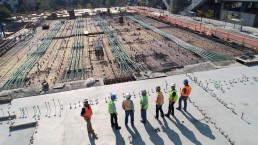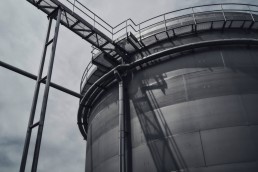Infrastructure after Covid-19 – when the mould is broken where do you want to be?
Competition or collaboration? Navigating change in infrastructure after Covid-19
The Covid-19 pandemic has brought about rapid unprecedented change. Companies have responded to imposed restrictions, people have adapted to new ways of working, and the impact on the economy, employment and productivity has been immense.
Businesses face an ever-shifting timescale for recovery but uncertainty on how they need to adapt in the short, medium and longer term.
A commitment to investment in infrastructure
With uncertainty over the shape of economic recovery, the UK government is under increasing pressure to provide answers. The current political agenda is balancing the risk of further outbreaks against the need to kick-start the economy and get people back to work. Infrastructure is a key part of this recovery plan.
As such, we are seeing a range of statements, commitments and emerging policies that::
- Commit to accelerated investment in infrastructure
- Criticise past failings in the delivery of major programmes which have taken too long and cost too much
- Question how other countries can do it so much better than us
- Recognise that we have developed a huge burden of bureaucratic processes
- Challenge the slow adoption of new technologies and innovation
- Reinforce previous goals on climate change and the environment
What does this mean for core infrastructure and regulated industries?
The services and facilities provided by infrastructure and regulated industries are essential to the future growth of the economy. The challenge is how to fairly manage the cost of recovery, which will ultimately be passed onto the consumer. This creates further pressure on the whole system including clients and service providers. Some key questions and considerations include:
For Clients (or sponsors)
- With greater pressure on household budgets, customer expectations on service and value will increase
- Customers will be less tolerant of failure and companies will be under greater scrutiny
- Social and environmental conscience is increasing
- As a result of COVID-19 there will be sustained change in the way people work. But is the full impact fully understood?
- Clients or sponsors will be under increased pressure from the regulators to deliver more for less
- Continuing to stretch existing resources and deliver incremental change will not be enough
- Companies will be driven to develop different and more efficient operating models
For Service Providers
- No longer contractors or consultants but “Service Providers”
- Has traditional contracting had its day and does it really deliver what clients and customers are ultimately looking for?
- Service Providers will be under the greatest pressure to address the higher-level challenges through creating new ways of working or new service offerings
- “Necessity is the mother of invention” – the time of greatest need will drive the greatest change and the more agile companies will be those that win
- Traditional contracts delivered in a traditional way will become an increasing “race to the bottom” based on price with associated increase in failure
Innovation and technology inevitably has a major part to play in addressing the above.
What part should Innovation and Technology play?
Regulated industries are notoriously slow adopters. If this is to change, it is essential to understand the reasons why and break these paradigms.
- Risk of failure is too high either in terms of impact on customers or regulatory action
- Procurement processes are cumbersome and often preclude SMEs/Start-ups
- In reality, Intellectual Property has a very short shelf-life, products are quickly copied
- There is more to be gained from running faster and letting others follow compared to standing still and protecting what you have got
With many organisations facing the same challenges, is there something to be learned from collaboration?
Competition or Collaboration?
Regulation has often been based on the premise of driving or simulating competition. So, what delivers the greatest benefit – organisations collaborating or competing? Many “alliance” delivery models are based on the benefits of collaboration which raises a number of questions:
- Regulated utilities by their nature are often monopolies so why isn’t there far greater collaboration and sharing of ideas?
- Technology/Innovation start-ups often have to prove their concepts several times over to separate clients passing through individual tortuous procurement routes. As a result many collapse before they start. As a wider industry why do separate companies re-invent the same wheel
- Contractors/Service Providers provide similar services to different clients and sectors in the same geographic area. Is there more to be gained from a common approach across sectors?
- If the same Service Provider is providing a service across multiple clients and sectors who is the regulator actually regulating – the Client or The Service Provider?
- If the end service across sectors is a similar service why should there be different regulatory models and different regulatory measures or even different regulators?
Acceleration, adaption and adoption
The COVID-19 pandemic has had an undeniable impact on organisations. Businesses have been forced to adopt a more radical and agile approach in how they adapt to change.
This unprecedented challenge has also created opportunities. Many businesses have failed but some have flourished. In the main, these organisations have embraced a culture of learning from others. They have collaborated and openly shared resources. They have undertaken the accelerated development of complex solutions and executed them with simplicity.
Going forward, significant commitments have been made, expectations are high and pressure on delivery will increase. The challenges will necessitate change and those that move fastest stand to gain the most.
The authors
Get in touch
We help infrastructure organisations to meet challenging targets through strategy, operating model design and transformation.
Contact us to discuss how we can help your organisation.
Want to find out more or meet one of our Infrastructure team? Contact us by email, phone or our web form.
The convergence of healthcare and travel
Airports and the wider transportation industry are facing a number of new challenges as they prepare for the realities of a post COVID-19 world.
Aviation and mass transit are dependent on density, the antithesis of social distancing. John Holland-Kaye, CEO, Heathrow Airport recently stated “It’s just physically impossible to socially distance with any volume of passengers in an airport.” He continued “The constraint is not about how many people you can fit on a plane; it will be how many people you can get through an airport safely”.
To address these constraints, many airports are considering how to adapt their existing operating models for the new reality and adhere to any new health and safety regulations.
What could the future of airports look like?
Already many airports, including those based in the UK, have introduced measures to enable essential travel based on government guidelines. Those guidelines include social distancing, ample distribution of hand sanitiser throughout airports and efforts to spread passengers evenly across terminals.
However, such measures may not be as easily implemented when capacity is ramped up towards pre COVID- 19 levels and therefore innovative and creative methods will be needed to help increase passenger confidence and change the narrative. Passenger confidence will be the key driver to getting back to some level of normality!
Accelerated automation across the customer journey
The passenger journey is changing. Post COVID-19, passengers may welcome the acceleration of automation across commercial aviation and urban mobility in order to limit physical contact.
A new era of automation is likely to extend from the basic such as the eradication of all remaining doors requiring pushing or pulling to the more advanced. These might include gesture or eye-movement-based interactions with payment kiosks and in-flight entertainment screens; robots and drones equipped with UV lights that continuously sanitize surfaces; and artificial intelligences that govern our previously clumsy attempts at everything from bus scheduling and curb usage to security screening and aircraft boarding.
We spoke with one passenger experience company, Elenium Automation, who are trialling ‘touchless travel’ technology. Etihad Airways recently announced that it plans to partner with Elenium Automation to trial new technology which allows self-service devices at airports. The technology will be used to help identify passengers with medical conditions, potentially including the early stages of COVID-19. Watch our interview with Elenium Automation here.
The new customer journey requires process optimisation and staff upskilling to ensure new regulations are complied with and the spread of viruses are mitigated.
The convergence of healthcare and aviation
Airports in Asia are one step ahead, having learnt from their experience dealing with SARS. For example, the Airport Authority Hong Kong are in the process of rolling out new measures that include the following:
- Full body disinfection channels
- Antimicrobial coatings
- Autonomous cleaning robots working 24/7
Bournemouth Airport are currently trialling thermal cameras in order to detect if passengers have fevers or other indications of disease. Airline passengers would simply walk through a series of tunnels, gardens, or other environments designed around new biometric-enabled security screening methodologies—without ever touching anything or even producing passports or other documents.
Identification through temperature monitoring then is likely to funnel through to more rigorous and accurate healthcare assessment. Technology is simply the enabler. This flow through process needs to be designed, procured for and integrated into the overall operating model, which will require retraining of airport employees, third-party contracting staff, process and system changes.
Service based offering
Less footfall simply means less custom, just as it does on any high street. In addition to less footfall, customers may be less willing to browse, and there may be capacity constraints in entering retail spaces.
How will customers spend their time at airports? We may see a shift from retail to service-based airport offerings. We may start to see GP (physician) kiosks or pharmacies set up within airports to provide health check-ups or assessments.
Similarly, first class lounges may start to offer basic health check services, particularly for frequent flyer customers. In addition, this repurposed real estate could serve a highly valuable consumer segment that includes those retired and travelling throughout off-peak hours.
Virus passport integration
The aviation industry may increase health and safety measures through integrating passports or ID documents, “immunity passports” with recent medical records or vaccination history. However, the introduction of such solutions will likely open up the debate of civil liberties and data security.
The identification and rapid diagnosis of COVID-19 symptoms is key to limit the spread of the virus and implement next-steps such as track-and-trace, self-isolation or early warnings to the receiving/host country. There is evidence now emerging in the US and China, based on small studies, that a large percentage of the population may be asymptomatic. If true, then airports will also have to put in place measures to monitor passengers who might be asymptomatic (i.e. showing no symptoms, but may still carry an infectious virus).
Future direction of travel
As evident above, there are a number of complex nuances to any airport COVID-19 response. Ultimately, the response must strike the correct balance between ramping up capacity so passengers can begin to book fares and reassuring passengers that it’s safe to be on a plane and in an airport.
1 Response continuum
- An airport may choose to do the bare minimum. Taking this option, airport management may roll out a minimum cost and effort plan that includes temporary measures with the view to ramping up and down the measures as they see fit while capacity increases or the threat decreases.
- On the other end of the spectrum, an airport may invest heavily in technologies coming to market and seek to robustly implement health and safety guidelines.
Taking the latter option, its salient that management look to strongly embed this move in their infrastructure and operations, processes and technologies so that they look to benefit from the implementation in the long run irrespective of an increasing/decreasing COVID-19 threat. This may include catering for a ‘new norm’ of passengers who expect hygiene and safety measures in place. Availability heuristics refers a mental shortcut that relies on immediate examples that come to a given person’s mind when evaluating a specific concept and it is likely that passenger behaviour and expectations may shift drastically even if a vaccine is found in the near future.
Outside of the confines of the airport, there is also opportunity to look at what assurances could be provided pre-travel. Such measures could minimise the chances of spread from travel and re-write the narrative on airline travel as a conduit of illness spread.
2 Assess readiness
Rapid assessment and implementation of most effective and customer reassuring COVID-19 protection measures. This may include measures such as staff testing, upskilling and scaled approaches/scenario planning to a capacity ramp up. According to the Centre for Disease Control and Prevention in the US, global pandemics have been as strong, if not stronger in wave two. If this is the case, airports have a fiduciary responsibility to their staff, customers and shareholders to have scenario planned the impact of wave two to minimise the impact.
3 Analyse feasibility
Detailed customer journey analysis to identify highest points of risk and feasibility analysis of MedTech offerings to cater for above risks. The solution is likely to be different for inbound versus outbound travel. The question then arises about where the level of responsibility lies. Is it with the government who may own the airport, or with the airlines and/or airports or a combination or all of the above. Scenario planning and insight driven decision making is key to getting these essential business decisions correct.
4 Assess revenue opportunities
Identify and generate a business case for post coronavirus revenue drivers and opportunities such as service offerings. For example, vacant airport real estate could be utilized as a lead generator for a major UK private hospital and/or a retail pharmacy chain and also heighten confidence of consumers remiss to getting back to aviation travel. Health and general well-being are likely to propel up the consumer agenda going forward.
Contact us
We help businesses with strategy and digital transformation, Get in touch to find out how we can help or arrange a free virtual meeting with our Healthcare and Infrastructure partners.
Chetan Trivedi
Healthcare Partner
Nigel Brannan
Infrastructure Partner
CONTACT US TO FIND OUT HOW WE CAN HELP
Future of Infrastructure 2020 report
This 2020 report by Raconteur explores the future of infrastructure, including:
- Smart cities, digital and new technologies
- Sustainability and the challenge of achieving net-zero
- Public perceptions of infrastructure in G8 countries
- Future-proofing infrastructure against climate risks
- Reusing existing assets to bring buildings into the circular economy
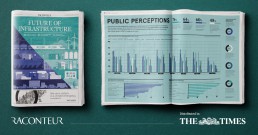
How we can help infrastructure organisations
At Curzon Consulting, we understand it’s about the destination and the journey.
We work with rail, road and utilities organisations to deliver tangible results. Our award winning management consultants help our clients get where they need to be through:
- Digital Monetisation and Transformation
- Data Driven Decision Making
- Operating Model Future Proofing
- Value Enhancing Strategies
Visit our infrastructure page or contact our Infrastructure Lead, Nigel Brannan, to find out more
Download ‘Future of Infrastructure 2020’ report from Raconteur, The Times
CONTACT US TO FIND OUT HOW WE CAN HELP
Evaluating structural entity options for a new arm of government transport body
The issue
- Embryonic consulting business established one year ago by a local government body responsible for transport, to monetise and deploy in-house specialist experience
- Consulting business deeply embedded in one of the organisation’s existing holding companies
- Business had not yet established the appropriate frameworks for managing revenue, project delivery, Intellectual Property and assets
- The client wanted to review the optimal entity structure for its Consulting business in order to better drive commerciality
- Strong desire to set up the Consulting business using an entity structure that fostered commerciality and leveraged in-house resources in the most optimal way
- Clear focus on building a profitable revenue funnel, self-financed growth, better IP and asset monetization, capitalisation on tax benefits, simplified and robust governance and transparent risk management
- Aim to start competing for, or partnering with big organisations to, deliver Advisory, IP and Operations & Maintenance contracts
What we did
- Conducted an exhaustive benchmarking exercise to provide the client with insights into how other service utility organisations have established successful Consulting businesses
- Defined a robust set of design principles and considerations for reference throughout the operating model design exercise
- Identified and shortlisted a set of structural options following a complete option evaluation in terms of feasibility and suitability
- Conducted end-to-end scenario testing, using carefully selected in-flight example bids, across the shortlisted structural options
- Refined the final structural model based on outputs of the scenario testing, for proposing to the client’s Finance Committee.

The results
- A benchmarking report, providing a crystallised view of the comparator landscape, including assessment of comparator suitability, and a summary of key insights and recommendations
- A report outlining the full assessment of entity options against a set of robust criteria and the rationale for down-selection
- A recommended structural model, clearly outlining three distinct entity options catering to the distinct requirements of each activity stream
- A high-level timeline illustrating implementation options and a trajectory of maturity
- A concise, crisp report containing key messaging for the Client to socialise to key stakeholders in order to secure Board approval
An award-winning team
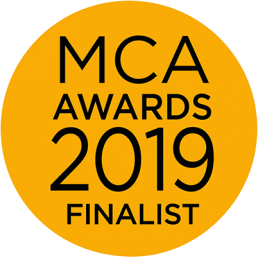





CONTACT US TO FIND OUT HOW WE CAN HELP
Company-wide performance improvement at UK water utility
The issue
- Ineffective incentive structure resulting in organisational silos & sub-optimal performance (in-house and contractors)
- Limited long-term planning and investment as result of weak and inaccurate in-house Asset Knowledge
- Legacy support services from merged smaller companies resulted in fragmented internal processes
- Lack of job prioritisation and adequate planning leading to poor productivity & rework
What we did
- Development and introduction of single performance management framework and incentive system to drive efficiency and customer focused culture
- Implementation of an Asset Capability Centre focused on three capability areas: Physical Asset Management, Stewardship & Delivery; revalidated proposed Capex and ran adaptive approaches on costs
- Implemented regulatory compliant Shared Services with revised governance, improved service levels and cost efficiencies
- Redesign and implementation of new job initiation, planning and scheduling processes
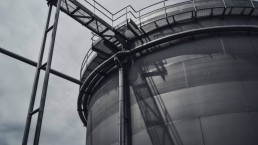
The results
- 20m annualised improvement in Totex
- Annualised Capex avoidance of c£18m throughout the regulatory period
- Annualised Opex reduction of c.£3m
- 25% reduction in shared service cost base
- 20% productivity increase in Field work, 30% increase in RFT and 10% reduction in Customer Complaints
£20m
annualised improvement in Totex
£18m
annualised Capex reduction
c£3m
annualised Opex reduction
25%
reduction in shared service cost base
20%
productivity increase in Field work
10%
reduction in customer complaints
An award-winning team






CONTACT US TO FIND OUT HOW WE CAN HELP
Improving yield management at a travel & leisure operator
The issue
- A leading leisure travel group needed to make a change in Yield Management practice to optimise commercial outcomes
- Profitability under strain due to increased competition and uncertain market conditions
- A complex and out of date system eroded trust in Yield Management practice
- Limited understanding of commercial impact of pricing decisions and a lack of operational control
- No alignment behind informed vision to guide the development, deployment and industrialization
- Capability gaps
- Siloed understanding of the potential impact of digital technologies
What we did
- Market analysis
- Developed strategy & analytical model to explore critical aspects of Yield Management Operating Model
- Developed blueprint roadmap to deliver vision & clear programme structure
- Business transformation
- Executive coaching
- People & culture change
- Flexible approach enabled client to retain ownership

The results
- Estimates over next four years indicate cumulative improvements in gross margin, uplift in aircraft utilisation & increase in spend per customer
- Improved cross-functional collaboration
- Uplift in gross margins for last season
- Commercial mindset taking hold in organisation
20M
exceeded the gross profit margin improvement target
25%
reduced customer loss
14%
reduction in operating costs
What our clients say
“As a result of Curzon’s support a strategic and digital leap has been made in how we manage the entire asset lifecycle to transform our Developer Service experience. This is a programme and a product that sets a new benchmark within the industry.”
Jason Tucker
Director of Alliances & Integrated Supply Chain, Anglian Water
An award-winning team






CONTACT US TO FIND OUT HOW WE CAN HELP
Driving performance in public sector infrastructure
Nigel Brannan highlights the importance of mastering the basics for a performance focused infrastructure organisation.
The performance challenge
Public sector organisations have long recognised the need to be more outcome and performance focused. While signalling the right intent, many struggle to translate desired outcomes into tangible outputs from their employees and suppliers.
A general ethos of reducing cost above all else compounds this challenge. Furthermore, the organisations often outsource the problem to a supply chain that is increasingly fragmented and under pressure to bid for contracts at very low margins. Suppliers then hope to make money from variations to the original contract that either were not or could not be specified up front, often taking advantage of their client’s poor planning, organisation or decision making.
The supply chain
Partnerships and collaborations are often touted as mechanisms for delivery assurance and improved performance but there are still significant inconsistencies in their effectiveness and practicality. The biggest challenge is usually to align organisations around incentives, which often involves increasing risk in exchange for higher profit, and ensuring that all parties are focused and organised around a common outcome. This is easier said than done.
For major, complex infrastructure projects, it extends beyond the physical construction effort to incorporate the planning and design phases. The public and political outcry at the spiralling cost of many high-profile programmes, or fear that they will overspend significantly, comes from a perceived inability to nail critical decisions, and plan and design in a reasonable timeframe. There are many political reasons why the champions of HS2, Hinckley Point C and Heathrow’s third runway continue to say those projects will deliver for the quoted costs, but the odds are that they will not.
The role of innovation
Innovation and digitisation play important roles in improving the performance of infrastructure organisations. Much of our work involves implementing innovation and digital strategies, but we do it through the lens of following the money. That means mastering the basics of productivity and performance, which starts with knowing what your core success measures are and how you are performing. In infrastructure delivery, you need right to left planning. This means working backwards from the answer on what needs to be in place and by when to hit key milestones and performance outcomes.
The move towards a performance management culture
Curzon & Company is currently partnering with a major public sector infrastructure client to move the organisation towards a performance management culture.
There are three stages in addressing the performance challenge –
Scan, Focus and Act:
- Scan establishes the baseline, trajectory and key drivers of performance. One critical output is a single version of the truth across scope, activity, cost and risk
- Focus is about prioritisation and channelling effort to where it has most impact. Major wins often come from an emphasis on looking forwards and addressing future risks rather than reporting historical performance.
- Act means actually doing things differently. It involves engaging the organisation and their partners at programme and project level to adopt new ways of working. Common measures, good information and ‘heartbeat’ disciplines get results.
None of this is rocket science, but it is remarkable how many organisations struggle to put it into practice.
The benefits
Our client now has transparency of previously hidden efficiencies, providing them and their regulator with the confidence that they are meeting their commitments. They can manage the affordability of the programme proactively – a key benefit where scope requirements evolve over time.
They are offsetting build cost risks by focusing on high-cost elements with standardised product design and productivity benchmarks. Most importantly, they are deploying tools and disciplines at project site level where success (or failure) is delivered.
The successful partnership between the client team and Curzon continues, helping to strengthen the foundations as the client migrates towards a new operating model.

This article originally featured in Raconteur, March 2019
About the author
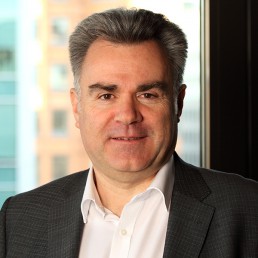
Nigel Brannan
I lead Infrastructure at Curzon Consulting
I've over 30 years of consulting experience leading major transformation programmes and strategy assignments with major utilities, transport and civil engineering organisations.
CONTACT US TO FIND OUT HOW WE CAN HELP
Capturing a greater share of the general aviation value chain
The issue
- An inherent lack of commerciality where services were being provided to incumbent FBO at no cost
- A lack of understanding of customer requirements
- A high operational cost was carried to manage changing customer needs & poor pilot & broker practices
- Customers transit through the airport was poor & the lounge & facilities provided were outdated
- Other airports were capturing market share by offering a superior service offering
What we did
- Smarter commercials & charging for service identified for revenue growth i.e. Marshalling
- Affiliated 3rd parties identified to provide onward travel & concierge services along with proposing a discrete duty free offering
- Levying cancellation charges when appropriate to drive improved customer behaviour
- A customer journey redesign to address concerns & recapture market share

The results
- Within 4 weeks the project identified growth opportunities to double existing revenue & double the share of the value chain
- The future strategy proposed changes to existing practices and partnerships
- Redefined customer proposition was suggested to maximise revenue & improve customer experience
An award-winning team













